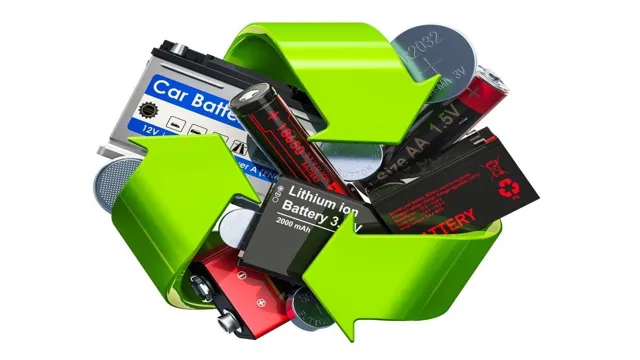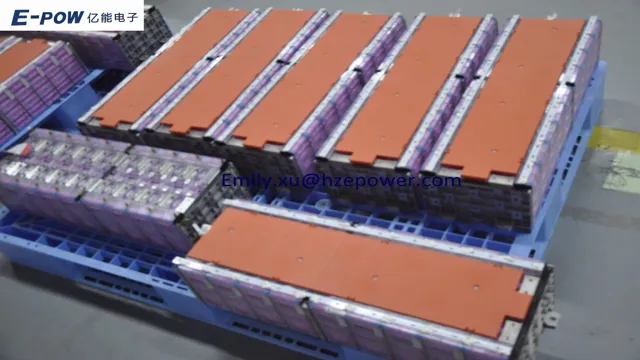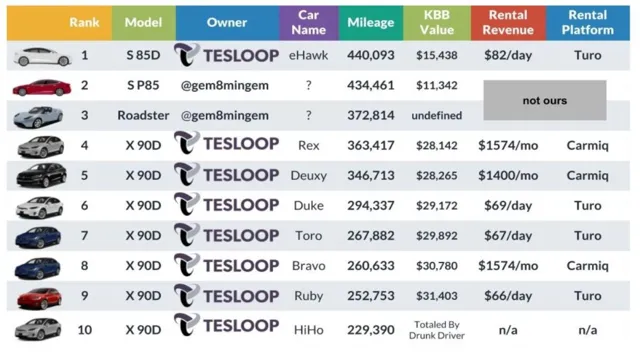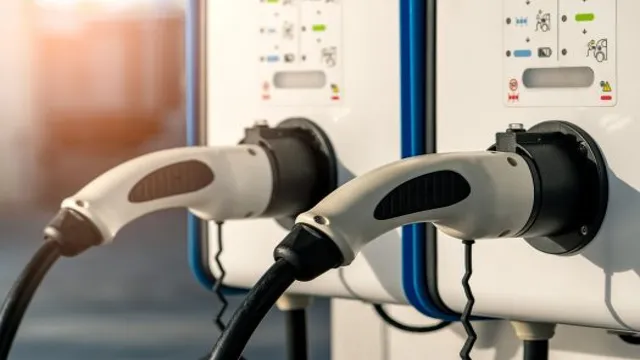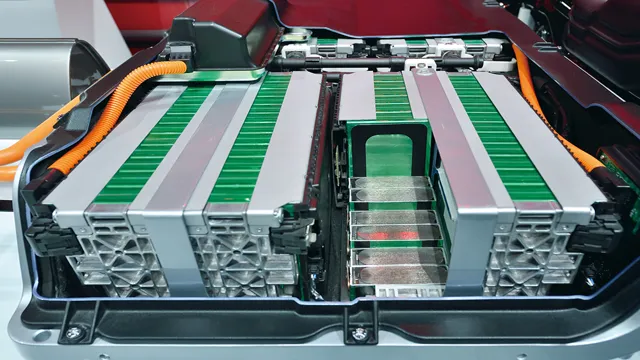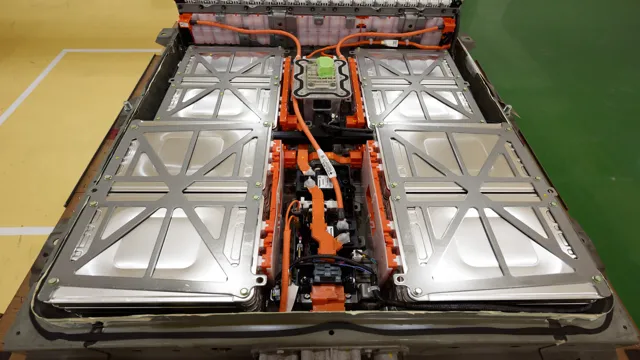Uncovering the Truth: The Environmental Impact of Battery Waste from Electric Cars
Electric cars have been touted as a more sustainable and eco-friendly alternative to gasoline-powered vehicles – and for good reason. They produce zero emissions while driving and require less maintenance than traditional cars. However, an important issue that has come to light is the issue of battery waste from electric cars.
As more people make the switch to electric cars, we are faced with the question of what we do with the batteries after they have reached the end of their lifespan. This is not a problem that can be ignored, as the batteries in electric cars contain several toxic metals and chemicals that pose a serious threat to the environment if not disposed of properly. But what exactly happens to these batteries when they are no longer useful? How can we dispose of them in a way that is both safe for the environment and economical? These are questions that must be addressed as we move towards a future with more electric vehicles on the road.
In this blog post, we will explore the issue of battery waste from electric cars in more detail and look at some of the solutions that are being proposed to tackle this problem.
Environmental Impact
Electric cars have been advertised as an environmentally-friendly alternative to traditional gasoline-powered vehicles. While this may be true in terms of reducing air pollution, there is a growing concern over the battery waste that comes from electric cars. Lithium-ion batteries, which are commonly used in electric cars, can take decades to decompose and release harmful chemicals into the environment.
Proper battery recycling and disposal is essential to overcome this issue. Recycling lithium-ion batteries can recover valuable materials that can be reused in other industries, reducing the need for new resources. However, the current recycling infrastructure poses a challenge as it is not yet equipped to handle large volumes of lithium-ion batteries.
Governments and manufacturers need to invest in research and development of battery recycling technologies and regulations to ensure that the environmental impact of electric cars is kept to a minimum. In conclusion, while electric cars are a promising step towards reducing greenhouse gas emissions, it is crucial to address the issue of battery waste as it will undoubtedly affect the sustainability of this technological transition.
Amount of Battery Waste Produced
When it comes to the impact of battery waste on the environment, the numbers are quite alarming. The amount of battery waste produced globally is increasing at an alarming rate. While batteries have revolutionized the way we operate various devices and equipment, the negative impact on the environment cannot be ignored.
Batteries contain a range of toxic chemicals like lead, mercury, and cadmium that can cause serious harm to the environment and human health if not disposed of properly. The high level of toxicity in batteries means that they cannot be disposed of in local landfills as they can contaminate the soil and groundwater. Therefore, it is essential to adopt safe and appropriate methods of recycling and disposing of batteries.
This includes repurposing, refurbishing, or recycling batteries through specialized vendors who can recycle them in an environmentally friendly way without causing any harm to the environment or endangering human health. We should be more mindful of our battery usage and disposal habits, as it can have long-lasting effects on our planet.
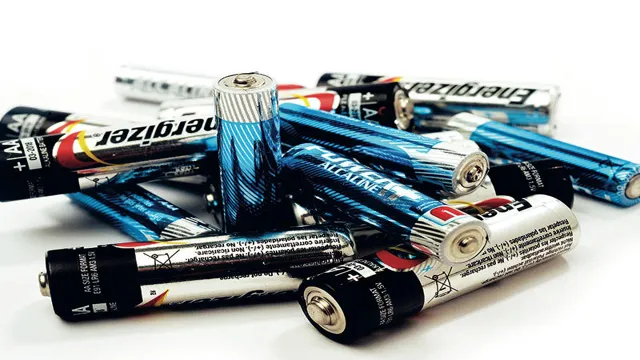
Toxicity of Battery Waste
Battery waste is one of the most toxic forms of environmental pollution that can have a severe impact on the planet. It is no wonder that when improperly disposed of, batteries can be extremely dangerous to both human health and the ecosystem. Some common forms of batteries contain toxic chemicals such as lead, cadmium, and mercury that can leach into the soil and groundwater, and ultimately into the food chain.
The impact of these toxins can range from a disruption in the growth and reproduction of plants to mutations and illness in animals and human beings. In fact, toxic exposure from battery waste has been linked to a variety of severe illnesses, including cancer. Therefore, it is essential to dispose of batteries in a responsible manner, such as through recycling, to prevent the release of toxic chemicals into the environment.
Recycling not only helps conserve natural resources but also protects people and our planet.
Current Solutions
Battery waste from electric cars is becoming an increasingly important issue as the popularity of electric vehicles grows. Currently, there are a few solutions to deal with battery waste, including recycling and repurposing old batteries. Recycling of batteries is a complicated process as different materials are used in making the battery, such as lithium-ion, nickel, and cobalt.
Nonetheless, the recycling of electric vehicle batteries is necessary to prevent toxic chemicals from getting into the environment. However, recycling is not a complete solution as it only helps in recovering a few materials and not the entire battery capacity. Another potential solution is repurposing used batteries for stationary energy storage, which involves combining used batteries to form robust energy storage systems.
The batteries are then used for energy storage in homes, offices, and industries. The repurposing solutions increase the lifespan of the batteries, reducing the demand for fresh energy storage systems. Overall, these solutions are essential for reducing battery waste from electric cars, which is crucial for creating a sustainable future.
Recycling and Repurposing
Recycling and Repurposing have become crucial undertakings in the fight towards sustainability and environmental conservation. As the world continues to experience the negative effects of climate change, finding solutions to combat these issues is more important now than ever before. Fortunately, there are current solutions that are yielding positive results.
Governments and individuals are embracing recycling and repurposing more than ever, and this is encouraging. For instance, many cities have initiated recycling programs to encourage their citizens to recycle more. Additionally, there is an increase in the production of recycled products such as paper bags, aluminum cans, and plastic toys.
Another significant development is repurposing old materials instead of throwing them away. For example, old shipping containers can be transformed into schools, hospitals, and even homes. As the awareness of the importance of recycling and repurposing increases, more people and organizations will adopt these methods, and the future will undoubtedly be greener.
Second-Life Applications
When it comes to second-life applications, there are a few current solutions in the market. One of the most popular is Second Life, a virtual world that allows users to create avatars and interact with others in the virtual environment. This application has been around since 2003 and has experienced a resurgence in recent years due to the pandemic, as people search for ways to socialize while staying safe.
Another popular solution is OpenSimulator, an open-source software that enables users to create their own virtual worlds and customize their avatars and environments. Other options include VRChat, AltspaceVR, and Sansar, each with their unique features and user bases. Despite the abundance of options, second-life applications are still in the early stages of development, and it will be exciting to see how they evolve in the future.
Extended Producer Responsibility
One solution to address the issue of waste management and environmental sustainability is through implementing Extended Producer Responsibility (EPR) policies. EPR holds producers responsible for the entire lifecycle of their products, from production to disposal. With this approach, producers are accountable for designing their products with environmentally-friendly materials, reducing their ecological footprint and generating less waste.
There are currently several EPR programs established in various countries and regions, such as the EPR program for packaging waste in Europe and the electronics recycling program in Taiwan. EPR programs may also provide incentives for manufacturers to incorporate recycled materials into their products, which can further reduce waste and promote circular economies. By implementing EPR policies, we can shift the burden of environmental responsibility from consumers to producers, ultimately leading to more sustainable and eco-friendly practices in the industry.
Future Developments
As electric cars become increasingly popular, concerns are growing about the environmental impact of their battery waste. Though electric vehicle batteries can be recycled, the process is expensive and currently only possible for a small percentage of the materials contained within them. However, researchers are working on new methods for recycling and reusing battery materials, as well as developing more sustainable battery chemistries.
One promising area of focus is on solid-state batteries, which replace liquid electrolytes with solid ones, eliminating the need for certain materials that are difficult to recycle. Additionally, some companies and organizations are exploring techniques like pyrometallurgy and hydrometallurgy to extract valuable metals from used batteries, reducing the need for new mining and decreasing the environmental impact of battery production. As these developments progress, electric vehicles will become even more environmentally-friendly and sustainable.
Advancements in Battery Technology
As the demand for more efficient and long-lasting battery technology continues to grow, scientists and researchers are constantly exploring new ways to improve existing battery systems. One development that could potentially revolutionize the battery industry is the use of solid-state batteries. Unlike traditional batteries that use liquid or gel electrolytes, solid-state batteries use a solid electrolyte that enhances the battery’s energy density and allows for higher charging rates.
Another exciting development in battery technology is the use of graphene. Graphene, a two-dimensional material made of carbon atoms, has unique properties that make it an excellent conductor of electricity. By incorporating graphene into battery electrodes, it’s possible to improve its energy and power density while reducing the battery’s internal resistance.
These advancements in battery technology are just the tip of the iceberg, and it’s only a matter of time before we see more groundbreaking developments that will transform the way we power our electronic devices.
Improved Recycling Techniques
Improved recycling techniques are essential for creating a sustainable future. As technological advancements continue to develop, we can expect significant improvements in recycling efficiency and effectiveness. In the near future, we could see the development of smart recycling systems that use machine learning and artificial intelligence to classify and sort waste quickly and accurately, enhancing the recycling process and reducing contamination.
Additionally, several startups are exploring innovative recycling methods that can turn waste into valuable products. For instance, companies have developed new recycling techniques that convert plastic waste into clean fuel, transforming waste into a valuable resource. While these developments are still in their early stages, significant progress has been made, and we can expect to see more practical solutions in the future.
As we move towards more sustainable practices, it is vital that we embrace these new technologies and methods to reduce our carbon footprint and create a better world for future generations.
Conclusion
Battery waste from electric cars isn’t just a problem for the environment, it’s a problem for our wallet too. If we continue to treat batteries as disposable items, we’ll end up paying a hefty price for all that waste. So don’t be a battery hoarder, recycle and reuse whenever possible.
Let’s put some power back into our planet and our pockets.”
FAQs
How much battery waste does an electric car produce?
Electric car batteries can produce up to 10 times more waste than conventional car batteries, due to their higher capacity.
What happens to electric car batteries at the end of their life?
Many electric car batteries can be recycled and reused in other applications, such as grid-level energy storage.
How can electric car owners dispose of their old batteries responsibly?
Electric car owners should contact their local authorities or battery manufacturer for information on how to properly dispose of their old batteries.
Are there any efforts to reduce battery waste from electric cars?
Yes, many manufacturers are researching ways to improve battery recycling and reduce waste from electric cars, such as using more recyclable materials in the battery construction.
